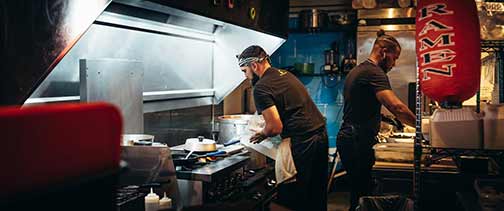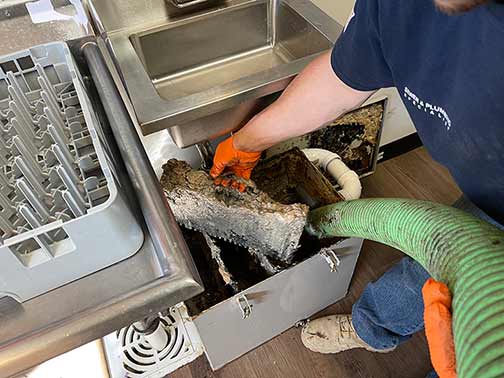
A plumbing emergency in your restaurant is the kind of problem you never want to have, notes InterWest Properties Management. The effects go beyond the impact on the day-to-day operations of your business.
You may be forced to suspend business until the problems are resolved. If the problem happens when customers are present in your building, it can cause irreparable damage to your reputation.
The problems can also earn you the unwanted attention of health authorities, leading to hefty fines. In fact, your business may be temporarily shut down, and you may even lose your license.
But the good news about most major plumbing problems is they don’t just happen. Most times, the problems build up over a period of time and give you fair warning before they happen.
This means that by taking timely action, it is possible to prevent most plumbing issues.
5 steps to prevent plumbing backups in your restaurant
The worst plumbing emergency that can happen in a restaurant is a plumbing backup. This is when the contents of drainpipes, sewer lines, or grease traps flow backwards and enter the building, either through a floor drain, toilet, or some other avenue.
What is the impact of plumbing backups on your restaurant business?
- Loss of revenue due to disruption of operations
- While on the one hand, you’re spending to fix the problem, you are also losing money for as long as you halt your services.
- Potential property damage if the spilled wastewater from the drains comes into contact with furniture and restaurant equipment. You may incur serious damage to your building.
- Loss of customer trust and confidence. This is the biggest loss and also the hardest to repair because customer confidence is hard to win but very easy to lose.
- Health risks to restaurant workers and customers due to being exposed to the pathogens in the unsanitary water. The restaurant’s food and water supply may become contaminated.
- Exposure to lawsuits and fines by aggrieved or injured staff and customers, as well as the danger of fines and penalties by the authorities.
The best way to avoid these negative consequences is to take adequate steps to prevent this plumbing problem in your restaurant. How do you prevent plumbing backups in your restaurant?
Protect drains from grease and leftovers
Educate your staff on why they should never dump fats, oils, and grease (FOG) directly into the sink and other drains in the building. Even if there are grease traps in your restaurant, they are not to be used as containers for used-up grease. To ensure proper disposal of grease, provide special bins in the kitchen for this purpose. Also, do not use the garbage disposal to trash leftovers. Before putting dishes in the dishwasher, leftovers should be scraped into the trash bin.

Ensure proper waste disposal
To reduce the risk of people dumping random items into the toilet, enforce a customers-only rule for the toilet, install hand dryers to prevent paper towels from being tossed in the toilet, and provide conveniently placed containers for disposal of feminine hygiene products. Install filters on every drain and have employees check the bathrooms every hour. If the restaurant has a bar, train bartenders and other employees not to dispose of leftover lime wedges and other cocktail-making materials in the drain.
Clean grease traps regularly
Follow a strict regimen for grease trap cleaning and maintenance. Do not cut corners by hiring an amateur. Secondly, although the regulations require that grease traps be cleaned every three months or when they are 25% full, you can impose stricter guidelines on your establishment. In addition to cleaning the grease trap, you want to make sure it is in the best condition at all times. Ensure that the grease trap is sufficient for your restaurant’s needs and fix any damage as soon as it is detected.
Regular drain inspection and professional drain cleaning
No matter how hard you try, it is not possible to keep grease, food debris, and other unwanted items out of your drainage system completely. By clogging up the lines, these items increase the risk of plumbing backups in your restaurant; all plumbing backups start life as an overlooked clog and blockage in your drains. To combat these issues, you want to make routine sewer camera inspections and professional drain cleaning a fixed part of your plumbing maintenance program.
Address problems as they appear
Delay is dangerous when dealing with plumbing problems in a commercial kitchen. Chronically slow drains, persistent bad odors from a sink, and strange gurgling sounds in the toilet may actually be the telltale signs of an impending plumbing backup. If a pipe, fixture, or other component of the plumbing is old or worn out, replace it. Install early warning devices to alert you of problems in the plumbing before they get worse. To catch problems early and solve them quickly, perform plumbing checks by yourself or by your staff (every quarter) and by a professional (annually).
To conclude, you may want to do a commercial plumbing risk assessment. This assessment will give you a detailed picture of what is happening in your plumbing, as well as a detailed road map to make the system more efficient.

